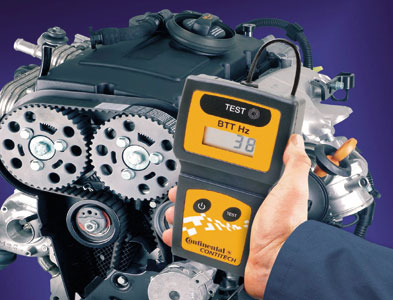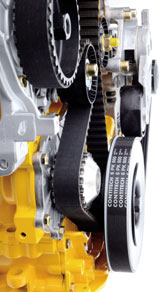
The technical team at Contitech offer their advice….

1. Read the instructions
Not following the installation instructions is possibly the most common mistake workshops can make. Installation instructions can appear overcomplicated at times but this is because of the complex requirements of modern tensioning systems. Most modern belt drive systems have automatic tensioning systems, many of which require precise setting to operate correctly. Therefore any variation from the installation instructions may lead to premature failure.
Even if you are familiar with the vehicle it is still worth checking the instructions as these can be updated from time to time, even after the vehicle has finished production. To assist mechanics in keeping up to date, ContiTech has introduced installation instructions that are available through the Product Information Centre (PIC) to garages.
2. Check you have all of the correct tools
To install the belt correctly as the designer intended it is vital to have the correct tools. The tools are designed not only to lock the camshaft and crankshaft positions but to also allow whatever movement is required for the belt to be tensioned correctly; this is especially important for hydraulic or spring tensioners. In most cases ‘home-made’ tools or alternatives such as painting on the pulley wheels will not allow for correct installation.
3. Check the parts that have been delivered are correct
This may seem simple but a number of belt drives fail every year because the parts installed on the vehicle are incorrect. Check carefully that the parts to be installed match the parts removed from the vehicle. If they don’t, find out why. In some cases part design is changed by the VM, but in other cases there may be two or more alternatives available for the same vehicle. Technical bulletins, belt applications and kit contents can all be found in the ContiTechProduct Information Centre.
4. Check all of the components that are going to be re-used
Changing timing belt kits is daily business now, so many parts of the belt drive system are automatically changed at the service interval. Workshops must remember, however, to check all of the components that are not included in the kit such as camshaft and diesel pump pulleys and oil seals/screws.
5. Make sure the area is clean and free from contamination
Contamination in many forms can affect the belt drive. Oil and coolant can damage the belt and affect the tension pulley, so check for and repair any signs of leakage. It is also important to check that the mounting surfaces of the bearings are cleaned and free from contamination. Finally, make sure the belt cover is securely installed.
6. Double check alignment and correct mounting of multi-V rib belts
Many multi-V rib belt failures are caused by a problem with alignment – on many modern engines even a small misalignment between pulleys can cause annoying noises for the car driver. When installing a multi-V ribbed belt check all of the pulleys for excess movement and correct alignment. After Installation, check that the belt is mounted correctly in the grooves of the pulley (no misplaced ribs).
7. Replace all required components
VMs give belt service intervals for a reason. It may seem like a good idea to save the car owner some money by reusing a component but, in reality, it can be a false economy. The service interval reflects the life of all components, not just the belt, and in most cases it is not possible to check the wear of a component by a visual inspection.
8. Handle the belts carefully
 Although they appear to be flexible it is still possible to damage a belt by mishandling. Timing belts should never be crimped or twisted; they should always be stored in their original packaging in a safe, dry place until needed.
Although they appear to be flexible it is still possible to damage a belt by mishandling. Timing belts should never be crimped or twisted; they should always be stored in their original packaging in a safe, dry place until needed.
9. Use a torque wrench
This is another common mistake made by workshops. Each mounting bolt should be set to ensure consistent load during its operating life. With torques ranging from as low as 15Nm to over 70Nm, it’s impossible to get every one correct by feel only. Incorrect torque settings can lead to premature failure of the bolt which, in turn, will lead to serious engine failure.
10. Don’t rush
Timing belt replacement is a complex and sometimes difficult operation. Take your time, ensure the engine is cold, plan the job carefully and try to avoid interruptions. Also make sure you have plenty of time to complete the job.









